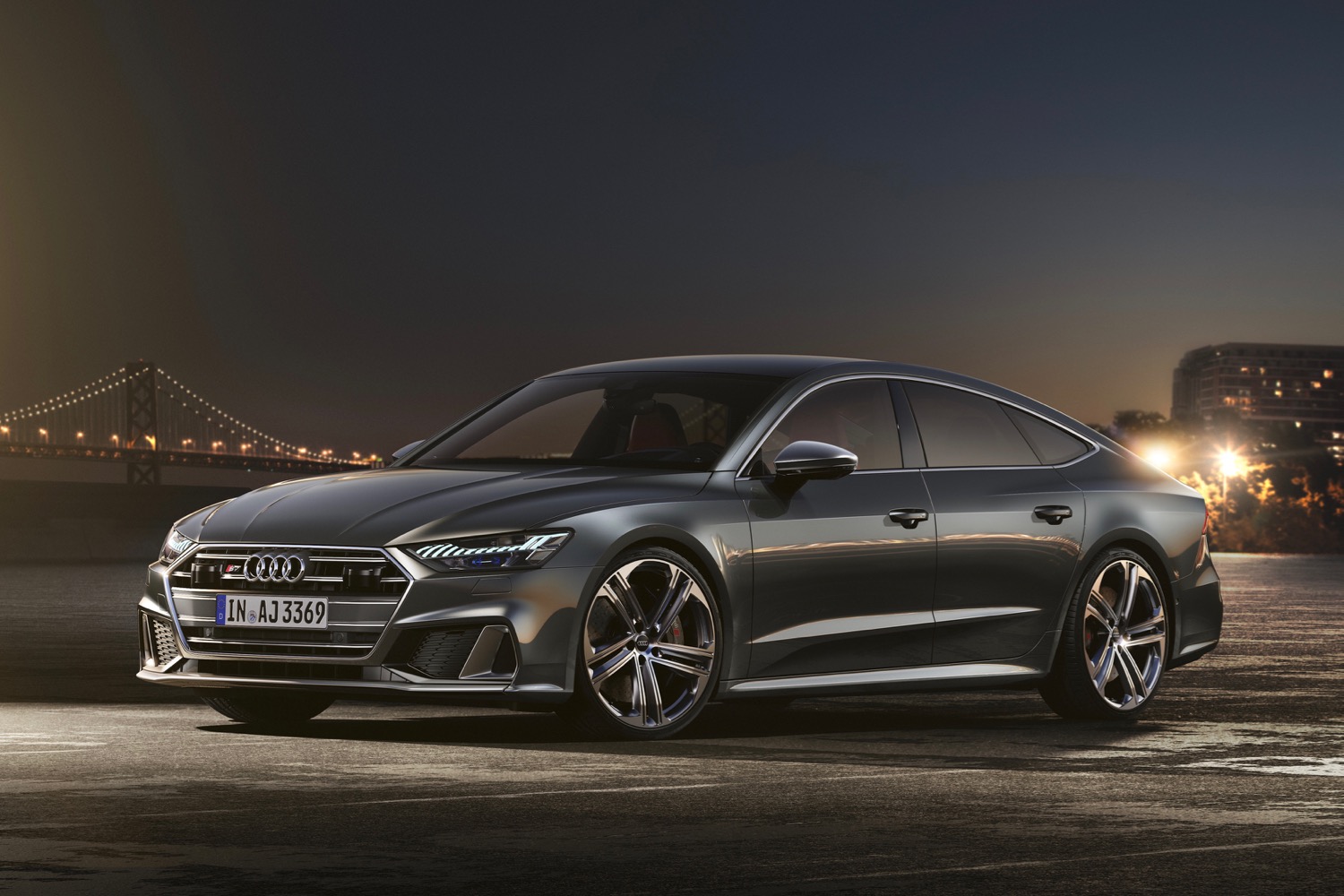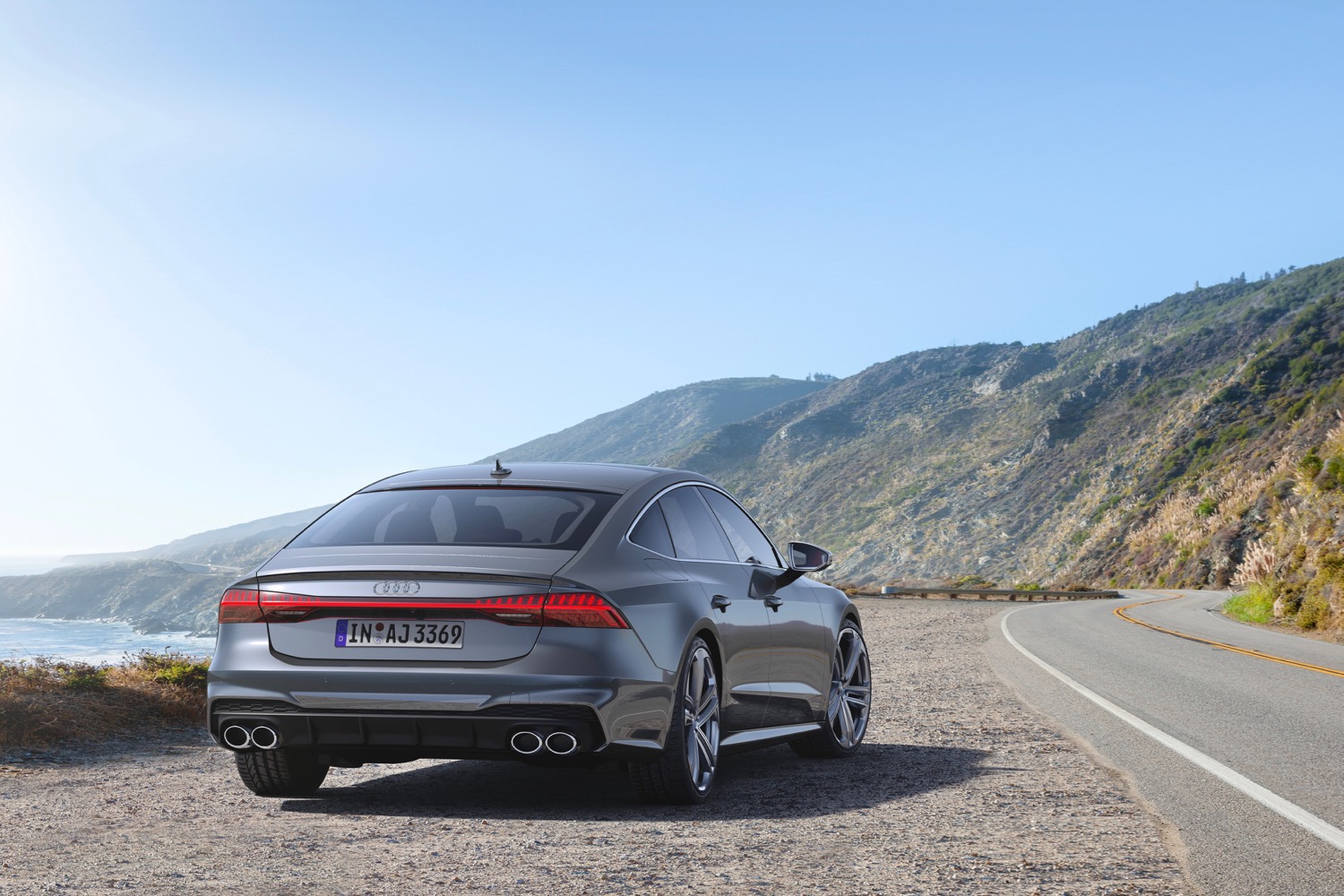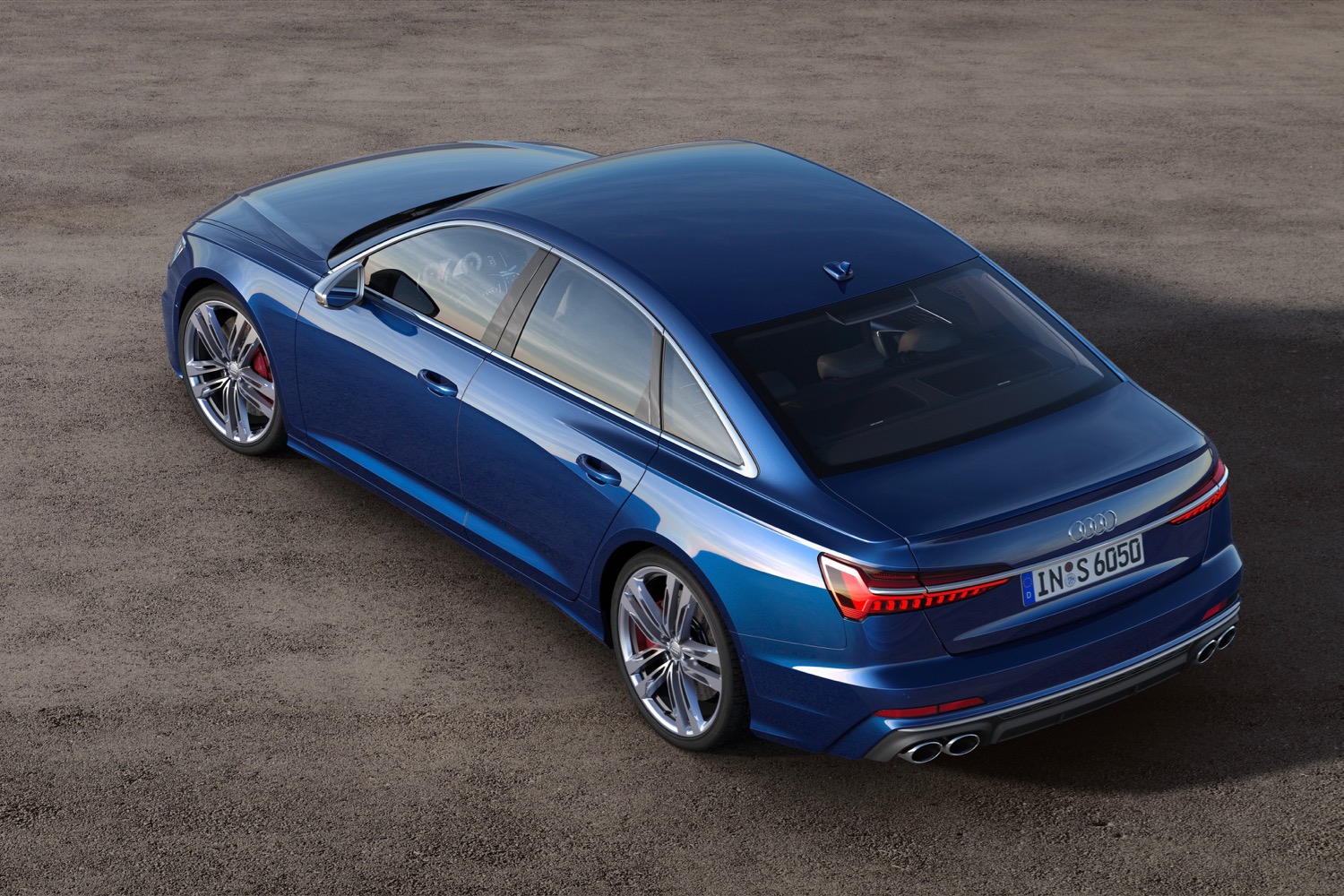Audi is adding sportier versions of the A6 and A7 to its lineup. The Audi S6 and S7 offer greater performance than the cars they’re based on, a feat Audi achieved without sacrificing fuel economy. A shared powertrain with some clever technology makes tit possible.
In the United States, the S6 and S7 will use a mild-hybrid powertrain built around a 2.9-liter V6 gasoline engine. The engine sports a conventional exhaust-driven turbocharger, as well as an electric compressor. The latter can spin up very quickly, eliminating the dreaded lag in throttle response associated with regular turbochargers. The result is 450 horsepower and 442 pound-feet of torque, with no waiting. Power is channeled to all four wheels through an eight-speed automatic transmission.
The S6 and S7 are also equipped with a 48-volt electrical system and a small lithium-ion battery pack, which is located underneath the trunk floor. The battery pack doesn’t provide enough electricity to drive a car on its own, but it allows for a very aggressive engine start-stop system that’s aimed at improving gas mileage. The system can even shut off the engine while the car is moving, allowing it to “coast’ for up to 40 seconds, according to Audi.
In other markets, the S6 and S7 will use a 3.0-liter diesel V6 in place of the gasoline engine. The diesel has the same combination of conventional turbocharger and electric compressor as its gasoline counterpart, but only makes 349 hp and 516 lb.-ft. of torque.
Audi also gave the S6 and S7 a sportier suspension setup, with a lower ride height compared to the A6 and A7, respectively. A torque-vectoring feature for the all-wheel drive system brakes the two inside wheels when the car is going around a corner, shunting power to the outside wheels to help guide the car through the turn. Audi has not published a U.S. options list, but it will offer a sport differential, four-wheel steering, and carbon-ceramic brakes in Germany.
Subtle exterior styling changes differentiate the S6 and S7 from the cars they’re based on. The performance models get restyled front ends, four round exhaust tips, 20-inch wheels, and other small details. On the inside, both cars get front sport seats, stainless steel pedal caps, and plenty of “S” logos. The Audi Virtual Cockpit digital instrument cluster also gets S-specific graphics.
The Audi S6 and S7 will likely launch in the U.S. as 2020 models. Audi may reveal more details on the U.S. launch later this month at the 2019 New York Auto Show, where the automaker plans to unveil an updated version of the TT RS.
When they go on sale, the S6 and S7 will compete against mid-level performance models from the BMW M Performance and Mercedes-AMG 53 ranges (the Mercedes-AMGs also have mild-hybrid powertrains). But the S6 and S7 will eventually be supplanted by even sportier RS models.






















